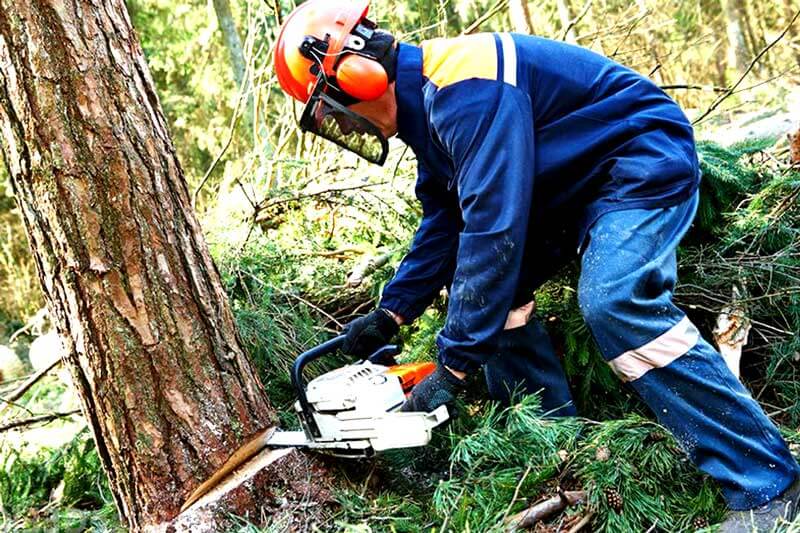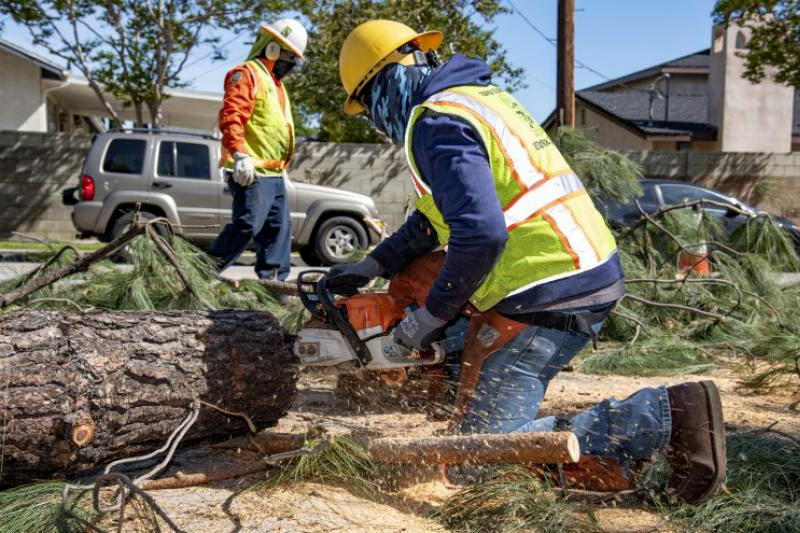All councils in Western Australia have their own set of rules when it comes to tree removal. Remove the wrong tree without a permit and you can be hit with some pretty hefty fines.
The local councils in WA usually enforce tree protection laws and fines of $25,000 to $200,000 per offense.
There are lots of cases when trees can be removed without approval, or getting a permit is easy if you know what to say.

Table of contents
ToggleHow to cut down a tree without getting fined in Western Australia
You can do a few things to avoid getting fined when removing trees in WA. Firstly you need to get your facts straight on which trees are legal to remove without a permit and which are legal.
See laws for your local council here.
- Trees in a fire hazard zone will most likely not need a permit.
- Dead trees
- A tree within 3m of your home foundations
- Fallen trees
- Leading trees
- Hazardous trees
These are the most common exemptions for tree removal in WA, but they will vary from council to council, so you will need to check your local council rules first.
You WILL be fined if you remove the following trees without a permit
Trees in western Australia are highly protected and Illegal tree-cutting penalties can be devastating to your finances due to the large fines charged.
These fines are used to discourage citizens from attempting to illegally cut down these trees. The following trees are protected from getting cut. Trees with;
Trees with great visual and aesthetic significance
If a tree has become known as a visual landmark due to its presence and aesthetic value, it may become protected by the state. These Trees add beauty to their surroundings by adding color to an area, softening harsh lines of buildings, etc. with their unique features. Cutting down a tree of outstanding visual and aesthetic significance without a permit can attract a fine.
Trees with high botanic and scientific value
Trees with unique and valuable morphologies can garner value as botanic and scientific in nature. They can become points of reference, subjects of studies and research, etc. Such trees are usually protected by the councils in western Australia. Cutting such a tree with high botanical and scientific value can attract a fine.
Trees that are habitat to any endangered species
If a tree has become the natural habitat of any endangered animal, plant, or fungi species, it becomes a protected tree. This is because the local councils aim to conserve nature and this cannot be done if they allow the habitats of precious living organisms to be cut down. Cutting down such a tree can attract a high fine.
Trees with significant ecological value
Trees with high ecological value are protected by the local councils in Western Australia. These trees may serve as a source of shelter, food, and hiding space for the living things present in that ecology. These trees may be an important asset to that ecology and cutting them down can cause the balance of life to be disrupted.
Trees with cultural, social, or commemorative value
Trees that have assumed important cultural, social, or commemorative value are prevented from being cut down in Western Australia. This includes trees used as memorials for a celebrated dead person, trees believed to be good luck, trees believed to be gods, etc. These trees are protected solely due to their assumed value.
What trees can I remove without approval?
Nearly all councils in Western Australia require property owners to obtain a permit before removing trees. However, there are a few exemptions here and there based on local council-level or state-level tree protection laws. Trees exempted include;

Dead trees
A dead tree holds no value in any sense including aesthetic value, biological or ecological value, etc. if a tree is dead due to whatever factor, it can be cut down without permission and will not attract a fine. Dead trees can also be dangerous as the branches are weak and can fall unexpectedly.
However, make sure to properly check if the tree is dead before cutting it down. This can be done by an arborist who will then give you a report that can be submitted to the local council on request.
Young trees
Young trees or Non-Significant Trees can be cut without attracting fines. These trees should be less than three meters (3m) tall in height and less than one meter (1m) in diameter. These trees usually have very little value to the ecology of the property. This is for most tree species except for endangered species as they have great value.
Trees that are an imminent risk to life or property
Any tree that is causing great safety concerns can be cut down without permits and will not attract a fine. This includes trees with Leaning Trunks, Compromised Roots, etc. These trees are an imminent risk to life and property and should be removed urgently.
This is because these trees if not removed on time can cause damage to people and plants around them leading to severe issues. Trees that are not structurally sound can cause damage and should be cut down immediately.
Non-native/invasive trees
In Western Australia, most non-native trees are allowed to be cut without a permit, this also goes for invasive trees as they compete with native vegetation and trees for space and nutrients. These trees can be cut and will attract no fine from local councils.
Non-significant or unregulated trees
There are many tree species that are not significant enough and with little value to Australia. These trees are usually unregulated by the local council and can be cut down without any permit. However, make sure that the tree in question is an unregulated tree before removing it to avoid paying any fines.












